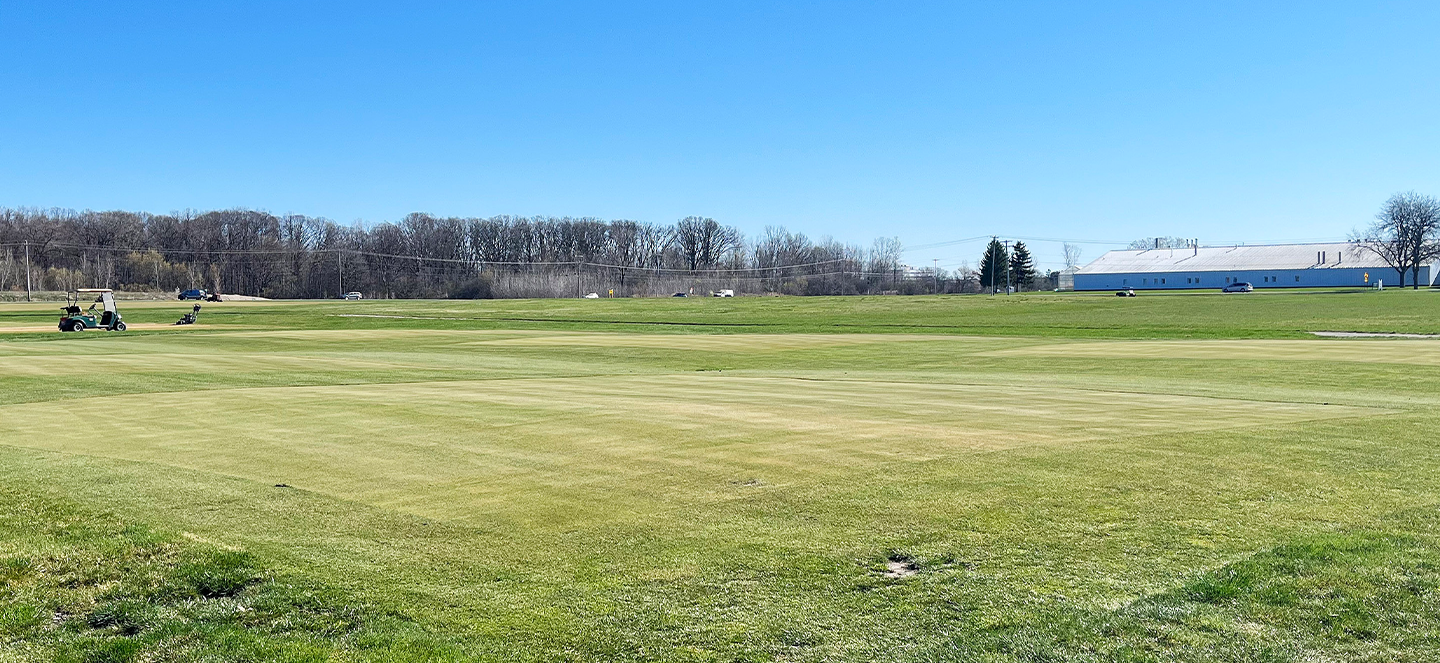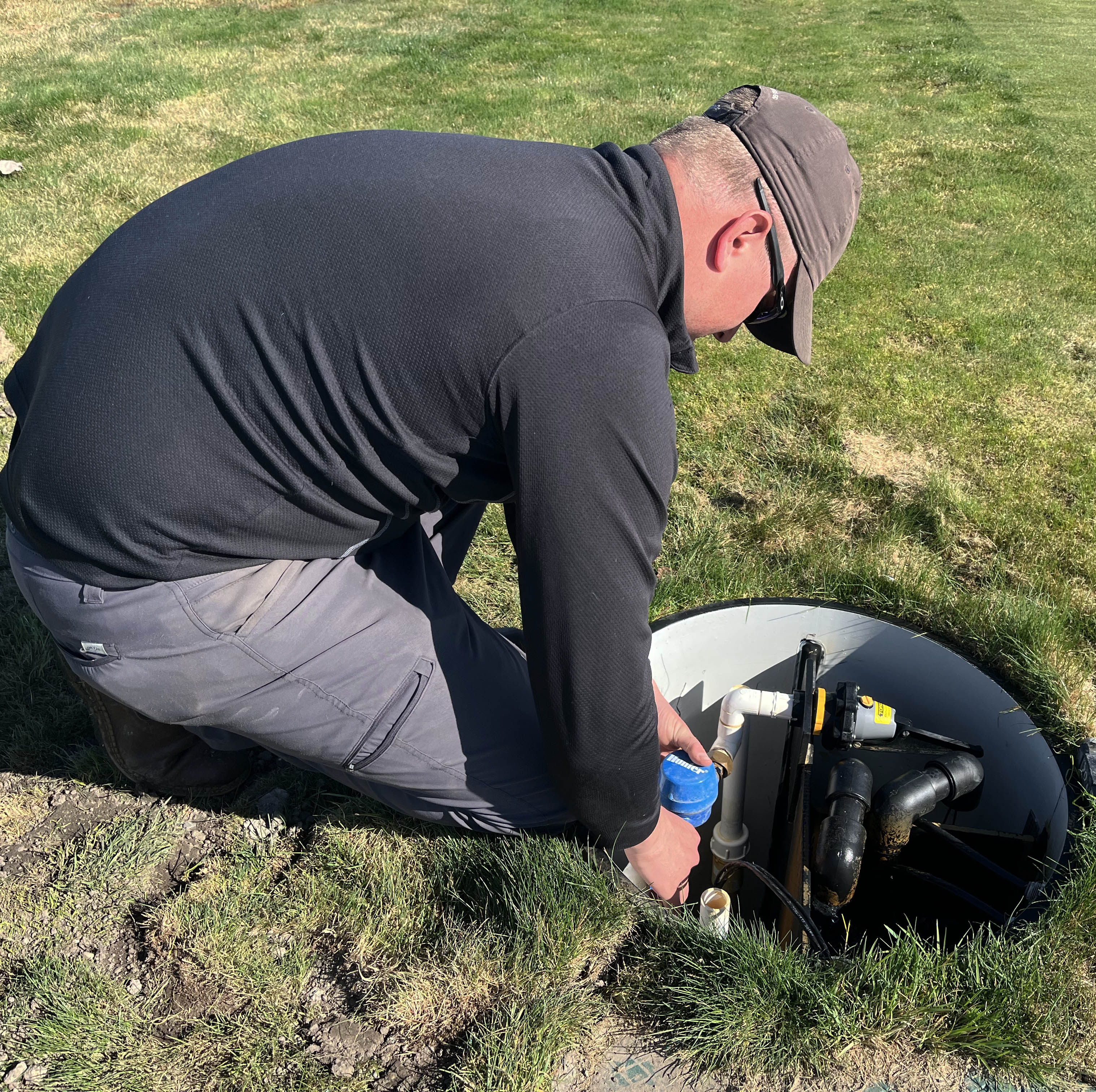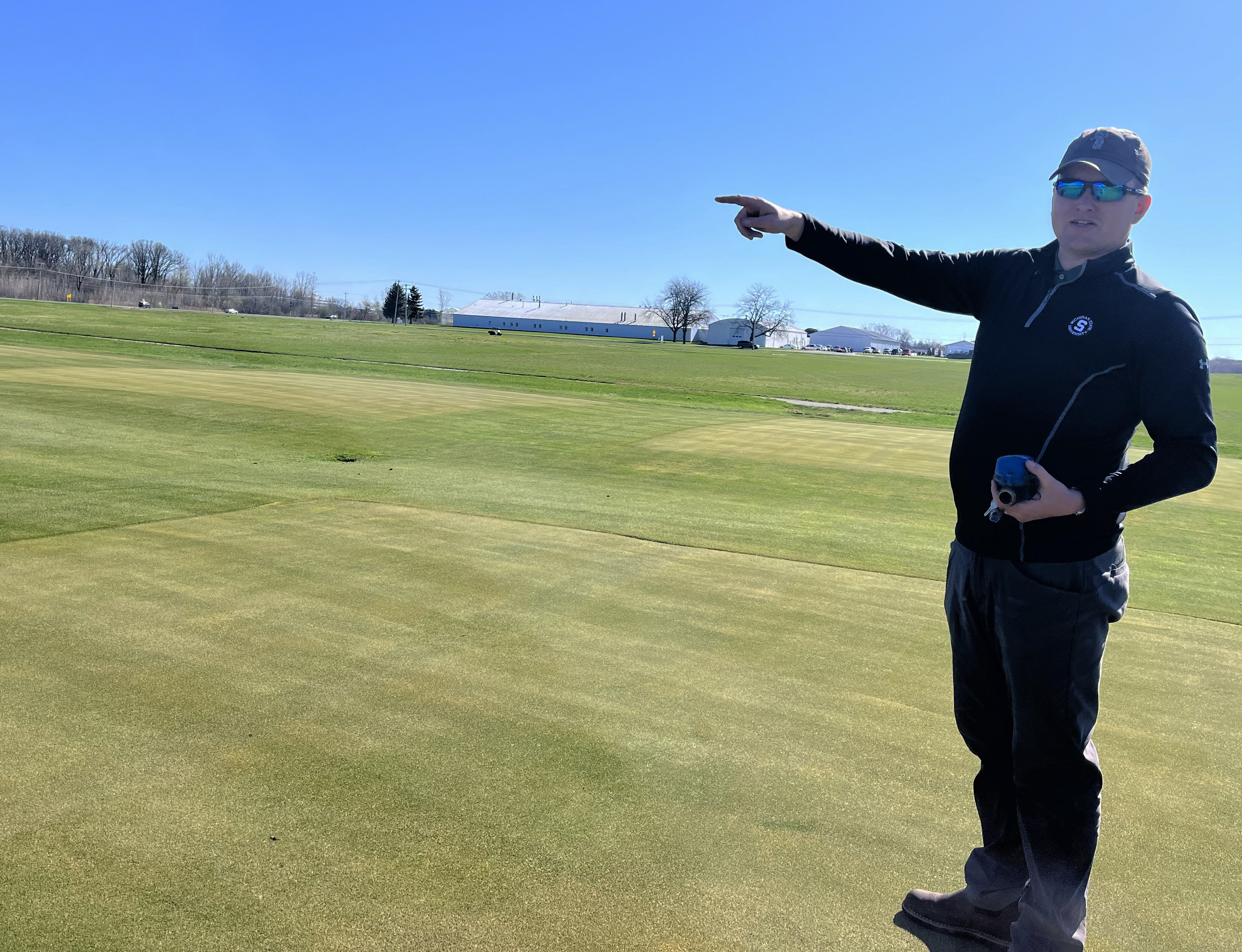Golf has a water problem.
Each year, golf courses around the U.S. spend billions of dollars to keep fairways and putting greens lush and thriving. Depending on where a golf course is located, many courses around the world spend around $1 million each year on irrigation. Meanwhile, more and more golf courses face irrigation restrictions and water rationing.
Putting greens are especially difficult to keep perfectly watered. The grass is grown on a soil mixture that’s predominantly sand, allowing it to drain excess water during rain events. But because sand doesn’t hold water, the grass must be irrigated daily.
That’s a problem that MSU’s Hancock Turfgrass Research Center is working to solve. Thom Nikolai, MSU senior academic specialist, and his team are one year into a cutting edge putting green irrigation project.
Nikolai, known worldwide as the “Doctor of Green Speed, and Michael Rabe, an MSU graduate student and assistant farm manager, are testing a subground irrigation system called a Capillary Hydroponic System. After one year of collecting data, the hydroponic system used 60 percent less water compared to Variable Depth Rootzones.
Their research is funded by the U.S. Golf Association, the Canadian Turf Research Foundation and the Michigan Turfgrass Foundation.
“These institutions are not funding the study due to the rising cost of irrigation,” Nikolai said. “It’s because they are serious about promoting sustainable practices, which includes minimizing water inputs.”


